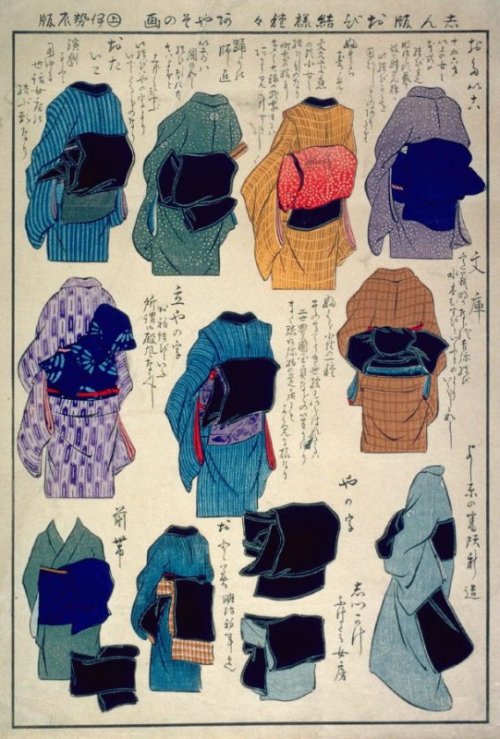philosophical-amoeba
A reblog of nerdy and quirky stuff that pique my interest.
291 posts
Latest Posts by philosophical-amoeba









Japan’s annual Wara Art Festival (previously featured here), one of our favorite signs that autumn has returned, is now underway at Uwasekigata Park. “Wara” is the Japanese term for rice straw. It’s what remains after the rice harvest. Some regions use it to feed livestock or improve the soil. But in Niigata Prefecture it’s used to make these enormous sculptures.
The Wara Art Festival all started in 2006 when the local district reached out to Musashino Art University to seek guidance on transforming their abundant amount of rice straw into art. And in 2008, the very first Wara Art Festival was held. Since then, every year the school sends art students up to Niigata to assist in creating sculptures made out of rice straw. The festivities have ended but the sculptures are on display through October 31, 2017.
To mark the 10th anniversary of the Wara Art Festival participants made this year’s sculptures twice as big as usual.

Visit the Wara Art Festival Facebook page for more photos of these magnificent sculptures.
[via My Modern Met and Spoon & Tamago]

Barefoot to school… Clogher, Co Tyrone, Ireland, from the Rose Shaw collection





One of my favorite things about working with archival materials is the opportunity to see earlier iterations of familiar, everyday items, such as this 1870 U.S. passport for chemical engineer Samuel Phillip Sadtler (1847-1923). While the text of the passport echoes that of contemporary ones (albeit in fancier script!), the size of the paper compared to today’s passbooks is staggering and the description of the passport holder is just delightful. In the absence of a photograph, we are advised that Sadtler, aged 22, has a “high” forehead, “straight” nose, “small” mouth, and “long” face, among other distinctive qualities. And since beauty is in the eye of the beholder, I wonder if there was some kind of standard for judging a forehead “high” or a face “long,” but perhaps that’s an archival find for another day.
Photo credits: Samuel P. Sadtler materials, 1867-1893. CHF Archives (accession 1989:02).
Solar System: Things to Know This Week
Add to your electronic bookshelf with these free e-books from NASA!
1. The Saturn System Through the Eyes of Cassini

This work features 100 images highlighting Cassini’s 13-year tour at the ringed giant.
2. Earth as Art

Explore our beautiful home world as seen from space.
3. Meatballs and more

Emblems of Exploration showcases the rich history of space and aeronautic logos.
4. Ready for Our Close Up

Hubble Focus: Our Amazing Solar System showcases the wonders of our galactic neighborhood.
5. NASA’s First A

This book dives into the role aeronautics plays in our mission of engineering and exploration.
6. See More

Making the Invisible Visible outlines the rich history of infrared astronomy.
7. Ready for a Deeper Dive?

The NASA Systems Engineering Handbook describes how we get the job done.
8. Spoiler Alert

The space race really heats up in the third volume of famed Russian spacecraft designer Boris Chertok memoirs. Chertok, who worked under the legendary Sergey Korolev, continues his fascinating narrative on the early history of the Soviet space program, from 1961 to 1967 in Rockets and People III.
9. Take a Walk on the Wild Side

The second volume of Walking to Olympus explores the 21st century evolution of spacewalks.
10. No Library Card Needed
Find your own great read in NASA’s free e-book library.
Make sure to follow us on Tumblr for your regular dose of space: http://nasa.tumblr.com.

E H Shepard illustration from Now we are six by A A Milne


Dau lun o weithwyr G P Lloyd & Co, Dumballs Rd, Caerdydd, gwneuthurwyr coesau pren i offer, c. 1930, ond beth yw'r gwahaniaeth rhwng y ddau?
-
Two photos of workers at G P Lloyd & Co, Dumballs Road, Cardiff, manufacturers of wooden tool handles, c. 1930. Can you spot the difference?
From the archives at St Fagans National Museum of History.
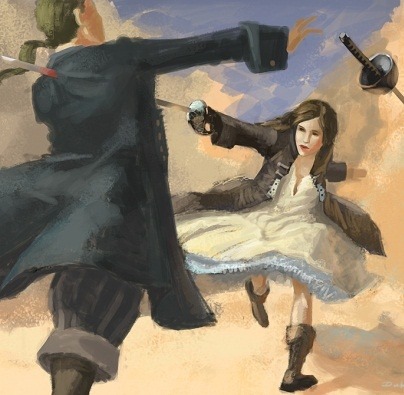
Julie D’Aubigny was a 17th-century bisexual French opera singer and fencing master who killed or wounded at least ten men in life-or-death duels, performed nightly shows on the biggest and most highly-respected opera stage in the world, and once took the Holy Orders just so that she could sneak into a convent and shag a nun.
(via Feminism)



Since 2009, Ada Lovelace Day has aimed “to raise the profile of women in science, technology, engineering and maths by encouraging people around the world to talk about the women whose work they admire.” The day’s namesake, Ada Lovelace (1815-1852), was the daughter of Lord Byron and Anne Isabella Milbanke. Ada, in possession of a keen intellect and deep passion for machinery, was educated in mathematics at the insistence of her mother. Later in life, Ada studied the workings of the Analytical Engine developed by mathematician and inventor Charles Babbage. In her notes on the engine, Ada described an algorithm for computing numbers – an algorithm which would distinguish Ada as one of the world’s “first computer programmers.”
In honor of Ada Lovelace Day, we present some images from the CHF Archives of women working in various chemistry labs. Click on each photo for additional information.
And for more women in science content, consider taking a look at the films in The Catalyst Series: Women in Chemistry by the Chemical Heritage Foundation.
1729
The number 1729 has an interesting story in mathematics involving the extraordinary Indian mathematician Srinivasa Ramanujan. G. H. Hardy accounts:
“I remember once going to see him (Ramanujan) when he was lying ill at Putney. I had ridden in taxi-cab No. 1729, and remarked that the number seemed to be rather a dull one, and that I hoped it was not an unfavourable omen. ‘No’, he replied, ‘it is a very interesting number; it is the smallest number expressible as the sum of two [positive] cubes in two different ways.’”
Ramanujan had a knack for numbers. Growing up in India at the turn of the 20th century, Ramanujan was largely self-taught. Over his short life time (aged 32), he independently developed nearly 4,000 results in mathematics. He kept his results (without proofs) in notebooks that modern mathematicians are still looking into this day. Nearly all of his results have been proven to be true and have driven research in number theory for the past century. Recently, one of Rumanujan’s results, previously unknown to mathematicians, was an important piece to a 2006 publication.
More at https://en.wikipedia.org/wiki/Srinivasa_Ramanujan

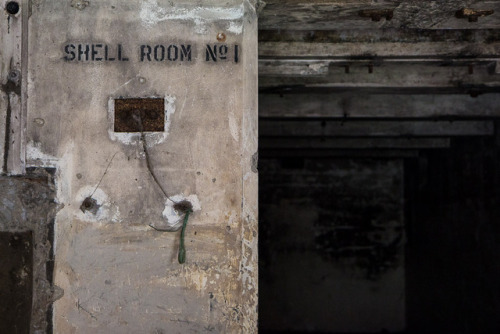



Corregidor Island, a small island at the entrance to Manila Bay. It is an important strategic point – whoever controls the island, controls Manila. And with it the Philippines. Since the Spanish first built a base on the island in 1570, Corregidor has been captured, and held, by the Dutch, the British, the Americans, the Japanese, and the Americans again.
It was taken in May 1942 by Japanese forces after months of near-constant bombardment. Corregidor marked the fall of the Philippines to the Japanese Empire. When American forces retook Corregidor in February 1945, it was another marker of the long, slow, and inexorable island-hopping campaign to push the Japanese back into Japan. That 1945 battle was the last action that Corregidor saw.
Today, it is an open-air museum. All across Corregidor are the ruins of the World War II military base, with bomb-ravaged buildings left as they were and many large guns still in place.


Why did Vikings have ‘Allah’ embroidered into funeral clothes?
A new investigation into the garments - found in 9th and 10th Century graves - has thrown up new insights into contact between the Viking and Muslim worlds.
The breakthrough was made by textile archaeologist Annika Larsson of Uppsala University. To unlock the puzzle, she enlarged the letters and examined them from all angles, including from behind. Read on

Sailor’s Eyeballs (Valonia ventricosa)
Known as bubble algae or sailor’s eyeballs, Valonia ventricosa are one of the world’s largest single-celled organisms. They’re found in almost every ocean in the world, mostly in tropical and sub-tropical regions among coral rubble.
These tough, shiny multi-nucleic cells, a kind of green algae, usually grow to be 0.4 to 1.5 inches in diameter but sometimes reach up to 2 inches across. By comparison, most human cells are so small they’re invisible to the naked eye; Valonia ventricosa are larger than your fingernail!
photograph by Alexander Vasenin | Wikipedia
via: American Museum of Natural History

Photograph of the XS-1 in Flight
On October 14, 1947, Captain Charles “Chuck” Yeager became the first human to break the sound barrier during powered level flight while flying the experimental Bell X-1 aircraft.
File Unit: X-1 Photographs, 12/11/1946 - 10/21/1947. Series: Flight Test Project Files, ca. 1945 - ca. 1959. Record Group 255: Records of the National Aeronautics and Space Administration, 1903 - 2006 .

Photograph of Captain Charles E. Yeager, 5/1948
Read Chuck Yeager’s notes from the moment that he broke the sound barrier:
“The needle of the machmeter fluctuated at this reading momentarily, then passed off the scale. Assuming that the off scale reading remained linear, it is estimated that 1.05 Mach i was attained at this time.”

Pilot’s Notes from the Ninth Powered Flight of the XS-1 (First supersonic flight)
Read more Pilot’s notes from these test flights in the X-1 Correspondence file in the National Archives catalog.










The Roly Poly Pudding - Beatrix Potter
First Edition - Second Printing 1908
[5500 copies Dec. 1908]



Ernst Mach, Chuck Yeager, and supersonic flight
Today is the 70th anniversary of the first supersonic flight. On 14 October 1947, Air Force Captain Charles Yeager piloted the experimental Bell X-1 plane named Glamorous Glennis and “broke the sound barrier,” reaching what scientists call “Mach 1.”
Yeager’s historic flight came thirty-one years after the death of Ernst Mach, the Austrian physicist and philosopher whose research on sound particles remained obscure until aviation capabilities began to approach the speed of sound. Mach lends his name to Mach numbers, used to describe faster-than-sound travel, and Mach angles, which measure the angle of the shock waves caused by flight. In addition to his work with sound, Mach’s rejection of Newton’s ideas on space and time influenced Albert Einstein’s theory of relativity.
Image credits: 1) Chuck Yeager next to experimental aircraft Bell X-1 Glamorous Glennis, 1940s. US Air Force, Public Domain via Wikimedia Commons. 2) Ernest Mach from the Journal of Physical Chemistry, Volume 40, 1902. H. F. Jütte. Uploaded by Armin Kübelbeck, Public Domain via Wikimedia Commons. 3) Chuck Yeager at Nellis Air Force Base on the 65th anniversary of his flight, 14 October 2012. Master Sgt. Jason Edwards, US Air Force, Public Domain via Wikimedia Commons.


In the days after the September 11 terrorist attacks, a number of spontaneous memorials appeared in the city. One, later named Tiles for America, displayed thousands of hand-painted tiles with inspirational messages. The tiles were hung on a chain-link fence at the corner of Seventh and Greenwich Avenues, where they remained as a place of remembrance for years afterward.
Irwin Silver. Tiles on fence, Greenwich House project, 7th Avenue & Greenwich Avenue. May 2002. New-York Historical Society.

Useless Indonesian Chiken facts: Ayam Cemani
Hi tumblr, meet one of the most expensive chiken In the world from Indonesia; Ayam Cemani
No we not paint it black with our excessive coal resources
It simply have unique genes that makes it whole body, meat and even organs all black
It’s chiken so yeah you can eat it, and it said to be very delicous. thou all these years living in Indonesia, I never actually tried it to tell you how it taste
I mean.. It cost up to Rp. 100 Million or about 10.000 USD for one of this chiken…so…..
The extravagant price mostly come from myths that surround these beautiful chiken. said it’ll bring you luck, health and every benefits you can imagine people would said about this emo chiken
pic sc: err…Internet
- J -

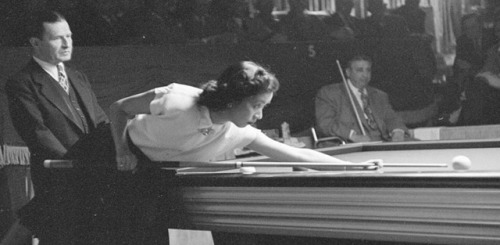


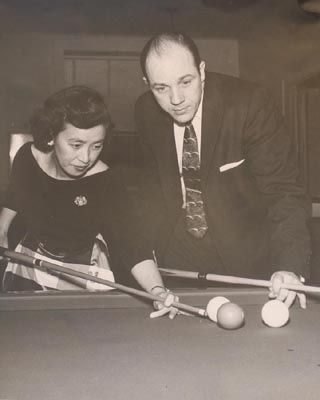


“Men want to beat me. I play men, six, seven hours a day. Men… they do not beat me.”
- Masako “Katsy” Katsura, first woman to compete for a world’s title in billiards
The “First Lady of Billiards” learned from her brother-in-law and in the 50s became Japan’s only female billiards pro. She paved the way for women to come, then left the spotlight and lived a quiet life. She died in 1995.

We are not certain of the age of this display card. The half-pound packet of butter does not show the familiar 2 ounce division lines that were typical of the one pound packet around the 1950s. The card could be from as early as 1934 when one business advisor is quoted in the papers as suggesting that the Dairy Board should establish three large patting plants, say, in London, Manchester and Glasgow, where bulk New Zealand butter would be examined and then repacked in ¼ pound, ½ pound and 1 pound pats under the ‘Fernleaf’ brand, starting with 20,000 boxes a week, and gradually increasing this amount over several years.
Fernleaf New Zealand butter; a pure natural food. [Display card. 1950s?]
Eph-F-DAIRY-1950s-01
Where does the word ‘meme’ come from?

The word meme was originally coined in the 1970s by sociobiologist, Richard Dawkins, from the ancient Greek for imitation.

He used it to describe how ideas and symbols propagate through a culture like genes through a population.

With the advent of the Internet, the process became directly observable in how jokes and images were popularized at lightning speed and soon the word came to refer to a certain kind of image.

So ‘meme’ not only describes how words become part of language, the word is a meme itself. As it turns out, there’s a word for words that describe themselves: ‘autological’.

Spread the word! ;)
From the TED-Ed Lesson Where do new words come from? - Marcel Danesi
Animation by TOGETHER
12 Amazing Facts About Elephants
In honor of World Elephant Day, we present you with 12 little known facts about one of our favorite creatures…in GIFs, of course.
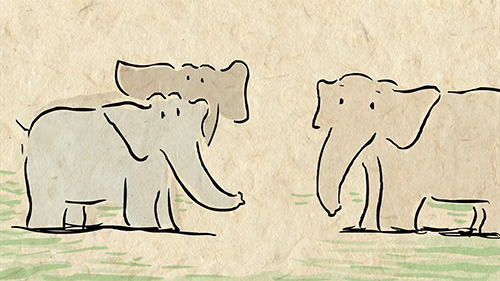
1. Elephants know every member of their herd and are able to recognize up to 30 companions by sight or smell.
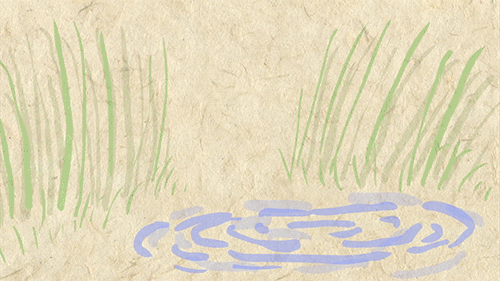
2. They can remember and distinguish particular cues that signal danger and can recall locations long after their last visit.
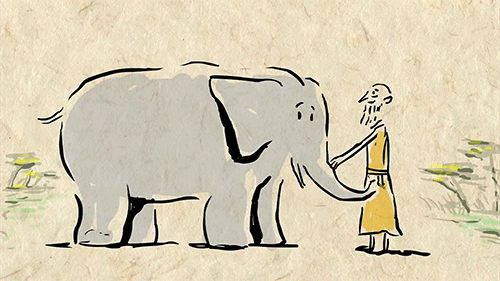
3. An elephant’s memory is not limited to its herd, nor is it limited to its species. In one instance, two circus elephants that performed together rejoiced when crossing paths 23 years later. Elephants have also recognized humans that they once bonded with after decades apart. 4.
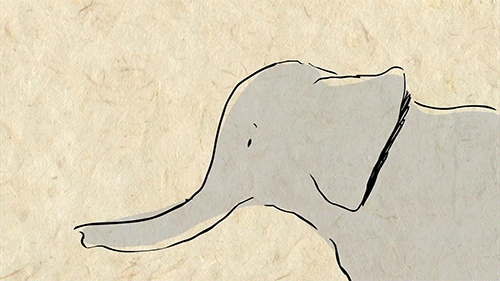
4. The elephant boasts the largest brain of any land mammal as well as an impressive encephalization quotient (the size of the animal’s brain relative to its body size). The elephant’s EQ is nearly as high as a chimpanzee’s.
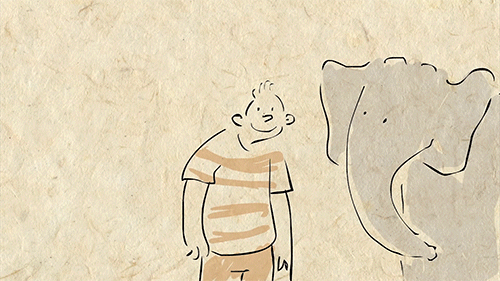
5. The elephant brain is remarkably similar to the human brain, with as many neurons and synapses, as well as a highly developed hippocampus and cerebral cortex.
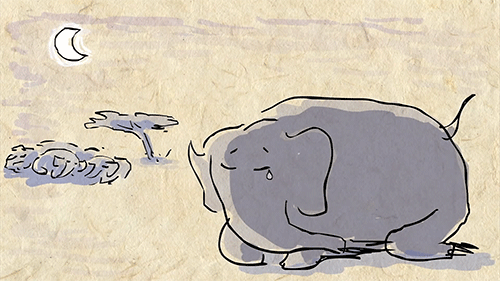
6. Elephants are one of the few non-human animals to suffer from post-traumatic stress disorder.

7. Elephants are creative problem solvers.
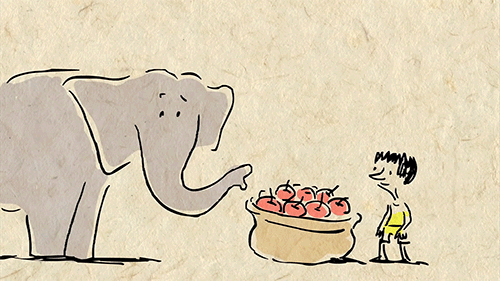
8. Don’t try to outsmart an elephant! They have an understanding of basic arithmetic and can even keep track of relative quantities.
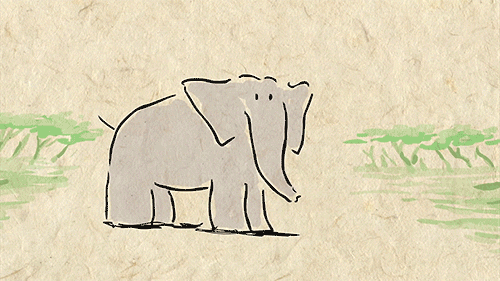
9. Elephants communicate using everything from body signals to infrared rumbles that can be heard from kilometers away. Their understanding of syntax suggests that they have their own language and grammar.
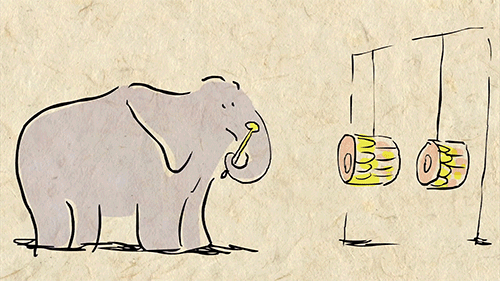
10. Elephants can recognize 12 distinct tones of music and recreate melodies.

11. Elephants are the only non-human animals to mourn their dead, performing burial rituals and returning to visit graves.
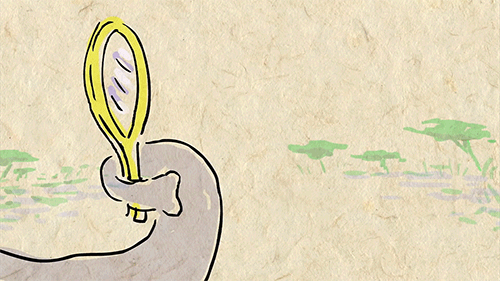
12. Elephants are one of the few species who can recognize themselves in the mirror.
Given what we now know about elephants, and what they continue to teach us about animal intelligence, it is more important than ever to make sure that these magnificent creatures do not vanish.
Check out some more fun elephant facts here and be sure to watch the TED-Ed Lesson Why elephants never forget - Alex Gendler
Animation by the ever-talented Avi Ofer







Fuji-Ya Restaurant, Second to None
In 1968, Reiko Weston opened her new Fuji-Ya restaurant built atop the limestone foundation of a 19th-century flour mill overlooking the Mississippi River and the Stone Arch Bridge. The original Fuji-Ya restaurant operated near 8th St. and LaSalle beginning almost a decade earlier, in 1959, and served fine Japanese food including Charcoal-Broiled Teri-Yaki dinners, seafood dishes, soups, rice plates, and more. Fuji-Ya translates to “second to none” and the new restaurant offered a dining experience like no other in the Twin Cities.
Weston’s restaurant business expanded over the years with Taiga, a Chinese Szechwan restaurant in St. Anthony Main, and The Fuji International in Cedar-Riverside neighborhood, which featured Korean, Chinese, and East Indian food in addition to Japanese food. Her restaurants received numerous awards and Weston herself was named Minnesota Small Business Person of the Year in 1979.
After Reiko Weston passed away in 1988, her daughter Carol stepped in to manage. But in 1990, the City of Minneapolis bought out the historic restaurant in order to make way for the newly designed parkway. About a decade later, Fuji Ya was brought to life again in Uptown in the trendy Lyn-Lake area, where it remains today.
Recently, Fuji-Ya has gained renewed attention as the Park Board makes plans for a $12 million riverfront refresh. Plans include the teardown of the old Fuji-Ya building, expansion of green space, improved pedestrian crossings, and the addition of a new riverfront restaurant. It was announced last week that Sioux Chef owners Sean Sherman and Dana Thompson will open Owamni: An Indigenous Kitchen on the site.
Menu from the original Fuji-Ya restaurant at 814 LaSalle Ave. from the Minneapolis History Collection Menu Collection. Photos from the Star Tribune Photograph Collection at the James K. Hosmer Special Collections, Hennepin County Library.

Aerial view of Dún Eoghanachta stone fort, Inis Mór, Aran Islands, Ireland (Bing maps)







The Christopher Robin Story Book from When we were very young, Now we are six, Winnie the Pooh, The House at Pooh Corner by AA Milne Illustrated by Ernest H Shepard London Methuen & Co Ltd. First Edition 1929
A newspaper you can blow your nose on

Here are some pages from Berthold’s Political Handkerchief, a political newspaper printed on cotton to avoid the government’s tax on paper.
Henry Berthold was later arrested, charged with shoplifting a boa and dismissed to Australia.



